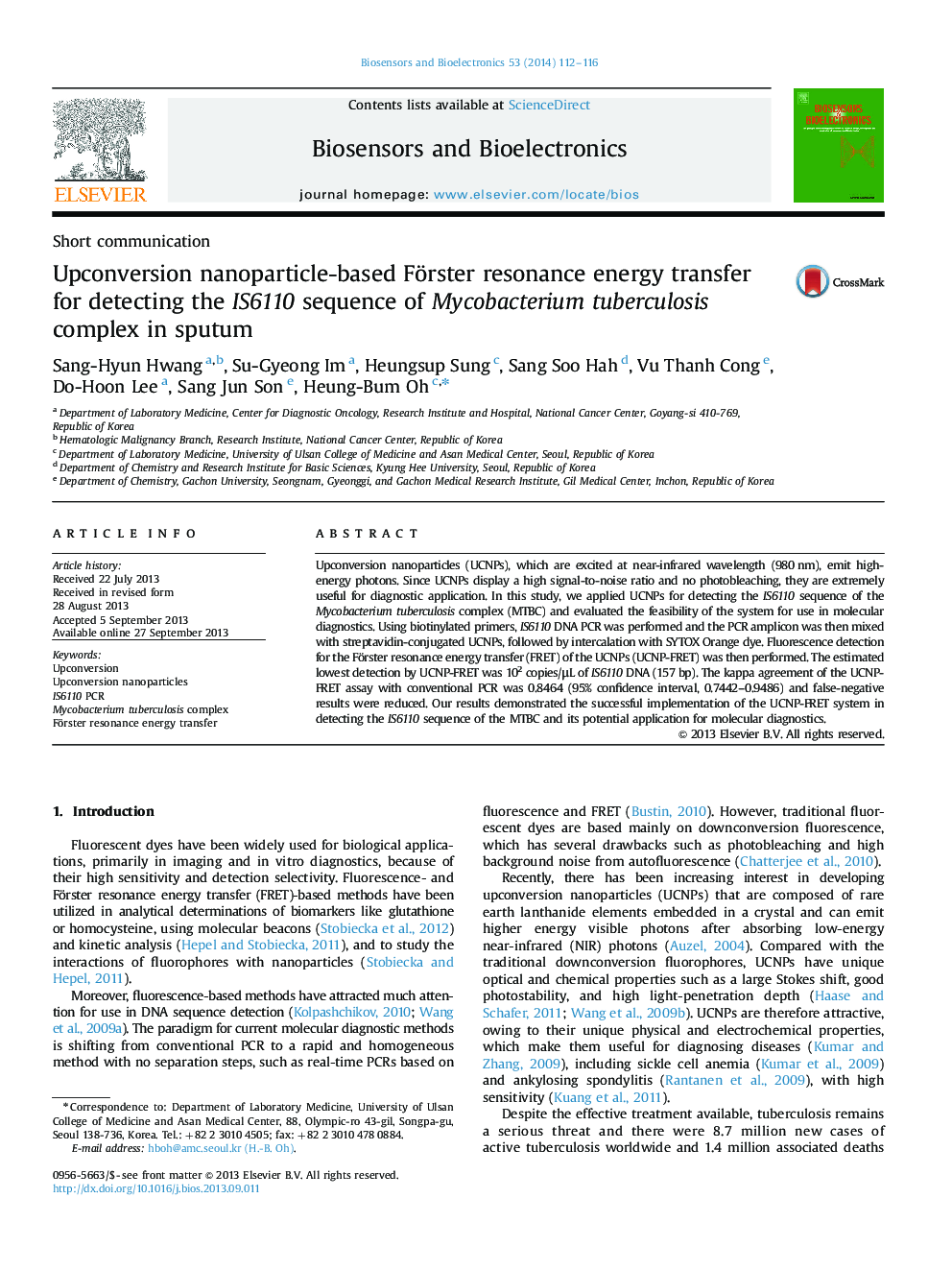| Article ID | Journal | Published Year | Pages | File Type |
|---|---|---|---|---|
| 866736 | Biosensors and Bioelectronics | 2014 | 5 Pages |
•Mycobacterium tuberculosis complex DNA has been detected using upconversion nanoparticles (UCNPs).•Förster resonance energy transfer from UCNPs was utilized for the DNA detection.•Potential application of UCNPs for molecular diagnostics has been demonstrated.
Upconversion nanoparticles (UCNPs), which are excited at near-infrared wavelength (980 nm), emit high-energy photons. Since UCNPs display a high signal-to-noise ratio and no photobleaching, they are extremely useful for diagnostic application. In this study, we applied UCNPs for detecting the IS6110 sequence of the Mycobacterium tuberculosis complex (MTBC) and evaluated the feasibility of the system for use in molecular diagnostics. Using biotinylated primers, IS6110 DNA PCR was performed and the PCR amplicon was then mixed with streptavidin-conjugated UCNPs, followed by intercalation with SYTOX Orange dye. Fluorescence detection for the Förster resonance energy transfer (FRET) of the UCNPs (UCNP-FRET) was then performed. The estimated lowest detection by UCNP-FRET was 102 copies/μL of IS6110 DNA (157 bp). The kappa agreement of the UCNP-FRET assay with conventional PCR was 0.8464 (95% confidence interval, 0.7442–0.9486) and false-negative results were reduced. Our results demonstrated the successful implementation of the UCNP-FRET system in detecting the IS6110 sequence of the MTBC and its potential application for molecular diagnostics.
